The Latest from TechCrunch |  |
| Meebo Mail? Check Your Desktop Notifier. Posted: 21 May 2009 08:41 AM PDT
Is Meebo moving into email? The web-based chat service already centralizes instant messages from AIM, Yahoo, MSN, Google Talk, Facebook, MySpace, and more. Folding in emails from different accounts across the Web is a logical next step. In fact, Meebo already tiptoed into the email arena this morning with a new feature which appeared in its Windows desktop notifier. A new “Mail” tab can now be found in preferences, allowing Meebo users to “Enable mail notifications for these accounts:” It then lists the IM accounts you’ve already signed up for on Meebo (which makes sense, since generally you use the same username and password for your email as you do for your IM within any given service such as Yahoo or Gmail/Gtalk or Facebook). When you get a new email, you get a notification pop up at the bottom of your computer screen, just like you do for new IMs. When you click on the notification, it takes you to the underlying email service.
Meebo CEO Seth Sternberg characterizes this as a “convenience feature” for desktop users: “Basically, we’re creating the same bridge between the webmail services and the desktop that we’ve already created between Meebo’s web site and the desktop.” The notifier is also a good place to test new features since most of Meebo’s members use the browser-based versions of its service. Why not add this to Meebo.com as well? Sternberg tries to shoot that notion down. He writes (via email): “everything we do is oriented around real-time communication. so i think it’s unlikely we’ll build a standard email client into meebo.com.” That does leave room for a “non-standard” email client. Certainly, adding email notifications that pop up like IM’s and then take you to your Web-based email service of choice would be just as much a convenience for Web-based users as for desktop users. But there is another clue pointing to somethingbigger than that brewing at Meebo. Every employee’s email address has been switched from employee@meebo.com to employee@meebo-inc.com. A switch like this is often a precursor to the launch of a Webmail product. MySpace recently did the same thing, as did Yahoo back in 1997 before it launched Yahoo mail. What would a Meebo mail product look like? It would have to take a backseat to IM, but you still need a place to send messages when a recipient is not online. Maybe the future of email is as a backup repository for IMs when you are offline. (Hat tip to the folks at Crowded Road for noticing the new notifier feature. Check out their Offline TechCrunch Reader iPhone app—iTunes link).
Crunch Network: CrunchGear drool over the sexiest new gadgets and hardware. |
| Not Safe: Poll Finds 1-in-4 Americans Text While Driving Posted: 21 May 2009 07:49 AM PDT  A new survey shows that 1 in 4 Americans text while driving. That's not good news for road safety, no sir. The survey, which was conducted by Vlingo, says that 26 percent of people admit to texting while driving—the implication is that plenty more people text while driving than admit to doing so. (Note: Polls are created with this type of "are they telling the truth?" scenario in mind, so it should make a huge impact on the final percentage.) The poll surveyed 4,800 people. A new survey shows that 1 in 4 Americans text while driving. That's not good news for road safety, no sir. The survey, which was conducted by Vlingo, says that 26 percent of people admit to texting while driving—the implication is that plenty more people text while driving than admit to doing so. (Note: Polls are created with this type of "are they telling the truth?" scenario in mind, so it should make a huge impact on the final percentage.) The poll surveyed 4,800 people. |
| Fotolia Launches Free Stock Photography Bank PhotoXpress Posted: 21 May 2009 07:05 AM PDT
Fotolia, a marketplace for microstock photography and video, is launching PhotoXpress, a free, premier-quality image bank, which will offer users royalty free image licenses for personal or professional use, ranging from Web site design to advertisements and editorial imagery. Patrick Lor, president of PhotoXpress North America, says the site will feature a collection of more than 350,000 images and illustrations, but Lor’s ambitions are to have close to a million photos available free of charge. Lor, who also holds the title of president of Fotolia North America, recently joined the company. Lor previously helped to build rival and now Getty-owned iStockPhoto, which he helped co-found (Lor left in 2006, shortly after Getty acquired the startup for $50 million). Lor says PhotoXpress will remain independent from sister site Fotolia, however the two are intricately connected. PhotoXpress members will be able to license up to 10 images daily, free of cost. The images are sourced from stock illustrators and photographers from around the world and span more than 22 categories, including global landscape scenery, photos of people in professional settings, architecture, and generic backgrounds. Only proper attribution is required. Professional ad agencies and firms who might need more than 10 images a day will be sent to Fotolia. In this sense, PhotoXpress is a lead generator for Fotolia. But more than that, it is a way for professional photographers to expose some of their work for free to a larger Web audience, while inculcating a respect for copyrights among Web consumers. It is an attempt to bridge the two worlds, and Fotolia wanted to do this before its competitors did. Lom says the biggest challenge is convincing the photography world to give away stock photography for free. PhotoXpress is still working out if the site will make any revenue—the obvious revenue stream is third-party advertising on the site, but Lor couldn’t confirm or deny that there will be ads on the site. PhotoXpress’s main competitor is Hungarian site Stock.xchange, which happens to be partly owned by Getty Images. Currently, Stock.xchange has close to 400,000 images to choose from. At TechCrunch, we often uses Flickr images licensed under Creative Commons for the best choice of images and the ability to publish the images freely. Bloggers will definitely find it helpful to tap into the wide selection of PhotoXpress’s site to find royalty free, high quality images to illustrate posts. This is exactly the right model. Image use is free up to a certain level (i.e., for most consumers, who serve to spread the images around and market them in effect). If you need more, then you start to pay a reasonable, modest amount. (Photo courtesy PhotoXpress). Crunch Network: CrunchBase the free database of technology companies, people, and investors |
| Contest: Would Your Dad Like Some 3D Printed Metal Cufflinks? Posted: 21 May 2009 05:33 AM PDT  Good news, people with Dads or Dad analogs! Show Pop you care with Shapeways custom cufflinks. Shapeways can offer two winning CrunchGear/TechCrunch readers each a pair of the custom 3D printed metal cufflinks as a Father's Day gift. The final shipping date for this item is May 26, 2009, so be sure to let me know the winners prior to then. These items MSRP for $49, including shipping and gift packaging. Good news, people with Dads or Dad analogs! Show Pop you care with Shapeways custom cufflinks. Shapeways can offer two winning CrunchGear/TechCrunch readers each a pair of the custom 3D printed metal cufflinks as a Father's Day gift. The final shipping date for this item is May 26, 2009, so be sure to let me know the winners prior to then. These items MSRP for $49, including shipping and gift packaging. |
| The Churchill Club’s 2009 Tech Trends: Energy, Data And More Energy Posted: 20 May 2009 10:06 PM PDT
After each trend was presented, the panelists voted on it (a green paddle held up if they agreed, a red one if they disagreed). They then debated its merits, before the audience got to vote in the same way. Here’s a rundown of the 10 trends along with who came up with them. 1. The Millennials Are Here. Everything is changing. Rapidly! — Joe Schoendorf, Partner, Accel Partners The idea here is that the age group about to graduate from college is going to take over the world. That itself is of course just about the most obvious statement in the world, but Schoendorf specifically meant that a generation is about to take over that doesn’t remember what it was like not to be online — these are the “millennials.” He feels these with further innovation farther than ever before because they were born with the web. The audience mostly agreed on this trend. 2. Advanced batteries will be the most popular alternative energy investment in ‘09 and’10. But the medium term will provide the best returns — Crowd Idea The group noted that while the press seems to love talking about this trend, it never seems to happen. Battery technology has been very slow to advanced over the past few decades, and there isn’t much to suggest that this will change anytime soon. That said, if there’s is one company that can nail an advanced battery, it will be huge. The crowd was evenly mixed on this trend.
3. The unstructured data deluge creates the next great information leaders — Ann Winblad, Partner, Hummer Winblad Venture Partners Enterprise data growth will be huge in five years, 80 percent of that will be unstructured, says Winblad. Some argued that this idea isn’t particularly new — but most agreed think the time is indeed right for this. The crowd mostly agreed with this trend. 4. Wireless broadband that will one of the only IT sectors to see increased funding this year — Crowd Idea Everyone agreed that this is a very old idea. Even with more investment in the field that boosts bandwidth, people will want more bandwidth. The crowd almost entirely disagreed with this trend. 5. “Maintech” not “Cleantech” — Increasing carbon efficiency of global GDP — Vinod Khosla, Founder, Khosla Ventures Khosla believes that we’re on the verge of a carbon-constraint economy. But he thinks that it’s not necessarily the hot “greentech” trend that will thrive in this economy, because it’s still too small a part of the market. Instead, look to newer ideas in more traditional energy technology. A lot of the smartest students in this country are getting into the energy tech field, he notes. Pretty much everyone agreed with this trend. 6. Power and efficiency management services will see a flowering of investment and innovation — Crowd Idea The idea here is that energy going forward isn’t necessarily going to be about building new power plants, but instead will be about figuring out how better to distribute the power we’re already creating. The smart grid will be increasingly important and a number of companies are working on this. The crowd mostly agreed with this trend.
7. The triumph of the distributed web — Steve Jurvetson, Managing Director, Draper Fisher Jurvetson The distributed web is “the aggregate power of all of you,” according to Jurvetson. He believes that crowds will control much of the interesting things people look for on the web. People are already spending more time in social networks than on email. He also briefly went into the idea of the new things going on in search — not just real-time crowd-sourced options, but also ideas that new versions of search could come from watching watch everyone is doing on the browser level as they surf the web. The audience was about half and half on trend. 8. Healthcare administration will see the best growth in B2B software in ‘09 and ‘10 – Crowd Idea Because they were running short on time, the group skipped this one, which everyone dubbed as old news. 9. Consumption of digital goods on mobile devices is THE growth story of the coming decade — Ram Shriram, Managing Partner, Sherpalo Ventures, LLC Shriram believes an ad model cannot continue to fuel growth in the mobile space. He thinks application building may be the model that does it, noting that we’re already seeing it across a variety of platforms in both the mobile and social networking space. He also believes that there’s a trend towards paid applications — though cheap ones — and that will be enough to blossom the industry. Some of the panel thought certain barriers, like the mobile carriers. The audience mostly agreed with this trend. 10. Electronic displays will prove the hottest investment in hardware this year and the next — Crowd Idea Again, running short on time, the panel barely talked about this one, but suggested there’s no real money to be made here even though the trend is hot. The audience almost completely disagreed with this trend. The Bonus Round Finally, the two moderators, Tony Perkins, the founder of AlwaysOn and Jason Pontin, the Editor in Chief of Technology Review (and former he former Editor of Red Herring), got to put up two trends. These were: 1) DC will prove to be a poor VC Washington trying to get involved in funding new ventures in technology will fail. Entrepreneurs need to be allowed to do what they do best, without government meddling. The audience all agreed with this trend. 2) The rumors of the demise of the reporter have been exaggerated While newspapers and magazines will continue to die, there needs to be a place for real journalism in the world — even if it is online. Blogs cannot replace trained journalism — it’s a collaborative process between professionals, Pontin argued. Some of the panel took exception to the notion that bloggers can’t also do journalism, but all agreed that there needs to be reporting on things like the Iraq war. The audience mostly agreed with this trend. Summary Energy, data and more energy were definitely the main themes discussed with the trends this year. There was also a lot of back and forth that many of the ideas being brought up were old ones. That rang true to me, but perhaps that’s to be expected we’re in down times, so you stick with what works (or has been predicted to work in the past). Overall, the panelists trends seemed almost too specific while the crowd-sourced trends were too general. Likewise, the discussions on those topics went from too focused, to not nearly focused enough. There were some interesting discussions on the energy front, as well as a bit on the mobile space — though surprisingly only Shriram really singled it out. Jurvetson’s talk briefly brought about talk of the real-time web and Twitter which everyone was very opinionated about — but then boring crowd-sourced topic out come up and kill the discussion. Before the panel began, the moderators went over last year’s trend to see how the previous panel had done. Most didn’t do too well, and I would suspect the same from this panel. Too many of the ideas are still a long time out, or are rehashed trends that no one really seemed to want to even talk about. Crunch Network: MobileCrunch Mobile Gadgets and Applications, Delivered Daily. |
| Google’s Beta Love May Die In Fight For Enterprise Customers Posted: 20 May 2009 08:59 PM PDT
Now we’re hearing that Google is having an internal debate about removing the Beta logos from a number of products that are aimed at enterprise customers. About half of Google’s products were still in Beta at the end of 2008. Retaining the Beta notation in the logo gives the company a sort of get-out-of-jail-free card when problems occur. Hey, it’s still in Beta, so don’t be surprised when something goes wrong. There’s a problem though. Sure, users think Beta is geeky and fun and cutting edge. But it turns out that enterprise customers are a little more serious about stuff working. A Beta tag means what it’s supposed to mean - not fully baked. Stuff that isn’t fully baked has risks, and guys that run IT at companies aren’t fans of risk. They need things locked down. And while they’re smart enough to know that Google’s Betas aren’t really Betas, they aren’t going to take a risk. If something goes wrong it’s their fault. That’s why Google took Chrome out of Beta just a couple of months after it was first released. OEMs need release software to install it on PCs, so they had to move it along. Marissa Mayer talked about Google Betas in general, and Chrome specifically, at the Le Web conference in Paris last December - the relevant clip is below. Don’t look for Google to give up their love of Betas in general. But they may remove the Beta notation from a number of Google Apps services, which are aimed at enterprise customers, sometime soon. A source first tipped us off that a debate was going on at Google, and we’ve subsequently confirmed it. Some top execs feel strongly that the Google Apps products need to have the Beta notation in their logos removed to get some enterprise customers to even consider switching from Microsoft Office. Four of the five core Google Apps services are still in Beta: Gmail, Google Docs, Google Talk and Google Calendar. Google Sites, previously Jot, is the lone exception. We may see those Beta notations coming down soon, though. Stay tuned. Crunch Network: CrunchBase the free database of technology companies, people, and investors |
| Every Minute, Just About A Days Worth Of Video Is Now Uploaded To YouTube Posted: 20 May 2009 07:15 PM PDT
Think about that for a minute. In that minute, nearly a days worth of footage will have been uploaded. And the pace is quickening. Back in 2007, shortly after Google bought the service, it was 6 hours of footage being uploaded every minute. As recently as January of this year, that number had grown to 15 hours, according to the YouTube blog. Now it’s 20 — soon it will be 24. That’s insane. It’s true that YouTube is not making Google any money, but when a site has this much dominance over a market, one way or another, there will be a way to effectively monetize it. The big Hollywood studios are already showing an increasing interest in using the platform, as are others — like ESPN. Meanwhile, YouTube continues to become a bigger part of Google’s larger social picture. Today, the service added a way to immediately record a video response to a video after you watch it. Sure, this is basically what Seesmic has been doing for a while now — but Seesmic doesn’t have 20 hours of video being uploaded every minute. Crunch Network: CrunchBase the free database of technology companies, people, and investors |
| BillShrink Gets Major Marketing Love From T-Mobile. Here’s Why. Posted: 20 May 2009 06:51 PM PDT Last night we reported that BillShrink, a scrappy startup that helps users lower common household bills, scored a major marketing deal: T-Mobile is promoting them in shops and via a national television commercial in a huge way. T-Mobile urges people to have a “mobile makeover” to “find a wireless plan that has the best coverage and price for you - even if it’s not with us.” The advertising goes on: “We’ll send you to BillShrink.com, an independent, third-party website that evaluates all of your unique needs against every national wireless plan.” Sounds awesome. Kudos to T-Mobile for promoting an independent site. And +1 to BillShrink for convincing them to put serious marketing dollars towards promoting BillShrink.com. …just one problem. The BillShrink tool that analyzes a user’s mobile usage to find the right plan for them says that a T-Mobile plan is almost always the right choice. In every query we ran, where minutes, text messaging, data and other variables can be changed, T-Mobile came out as the top result that saved users the most money. In some queries T-Mobile took every result on the first page.
Now it turns out the T-Mobile, which is the smallest major network in the U.S., happens to offer more minutes and other features than the others for a lower price. Other sites like MyRatePlan agree. In other words, BillShrink didn’t tweak the results because of their marketing partner. It just so happens that T-Mobile has real incentive to push them as an independent third party. Because they always come up with T-Mobile on top. Something tells me the other networks won’t be doing similar deals. BillShrink has not yet responded to our request for comment. Update: Peter Pham has responded in the comments. Update: Wait, we found one search where T-Mobile came up second! 1800 minutes, unlimited texts and unlimited data shows Sprint first, T-Mobile second. Crunch Network: CrunchBase the free database of technology companies, people, and investors |
| Google Suggest Adds Hyperlinks, Personalization And Yes, Ads Posted: 20 May 2009 04:59 PM PDT
Previously, when you types a query into Google’s search box, the menu would drop down giving you a range of possible search terms and how many results each would return if you select that one. Clicking on any of those would take you to a results page. Starting today, when you start typing in the search box, the suggest drop down is populated with a number of interesting things including direct links to pages, personalized results and even sponsored ads. For example, if you start typing “TechCrunch” into Google with this feature enabled, you’ll see the first result in the drop-down menu is an actual link to our site. That cuts out the results page middle-man and saves time. There won’t be hyperlinks populated for all queries, but ones where Google is pretty sure they know what you’re looking for, you should see them on, we’re told.
That’s a great feature — but it also opens the door for Google to do something potentially much more interesting. With hyperlinks now in Suggest results, Google can also start serving ads in the results drop-down. And it’s already experimenting with it for a limited number of sponsored links. This is Google serving you ads before you’ve even done a full query — just based on what you’re typing. And it’s pretty genius because presumably, companies would bid to get placed in these drop-downs just as they do for search result pages. And the click-through on these things must be massive. But that’s getting ahead of ourselves. Google is very much downplaying that aspect right now, only saying that its experimenting with a limited number of sponsored links and that the feature is not open to new advertisers at this time. But you can bet it will be one day, and it can do nothing but help Google’s ad click-through rates.
[Above: What Suggest previously looked like.] Another nice feature new to the drop-downs is personalized results. If you use Google’s history feature, you can see sites or results that you’ve used in the past get populated at the top of the drop-down. And if those aren’t actually relevant to what you’re looking for, there’s a “Remove” link to kill them. Something else useful that Google is doing with Suggest is that even when you’re on a search results page now, you can use Suggest to further tailor a search. What I mean by this is, say your first search was for “roller coaster,” when you get to the results page, if you start typing in the search box again, you’ll get results based around that original query. So if you were to type “biggest,” Suggest would give you a drop down with “biggest roller coasters” suggested. It’s a subtle feature, but nice.
A final small feature is that the “Google Search” and “I’m Feeling Lucky” buttons have been placed in the drop down as well. Previously, the drop down obscured the view of these. And as you’ll notice in the screenshots, Google removed those silly tallies telling you how many results each query had. Most people were just confused by them, and it’s not like they helped rank the results in the drop down, Google says. Yesterday, I gave Yahoo some grief over their search product on the consumer end after a lackluster state of search event. This is the type of stuff I like to see — just small, little useful features. They don’t necessarily have to be game-changers — at least not until Google starts selling those sponsored links in the drop-downs. Crunch Network: CrunchBase the free database of technology companies, people, and investors |
| Strap In: Mozilla’s Jetpack May Be The Next Step In Browser Extensions Posted: 20 May 2009 04:42 PM PDT Mozilla has unveiled a new project from its Labs division called Jetpack that gives us a taste of how Firefox might begin extending web functionality in years to come. While the project is still quite early in development, it seems to be taking the form of a streamlined extension system, allowing web developers to introduce new features to the Firefox browser using web-based tools and requiring only a minimal amount of effort on the user’s part. Firefox extensions have long been one of the best parts of the browser, allowing users to add and remove features to suit their needs. But while the user experience of installing these has been relatively straightforward, it still requires a browser reboot, which can be frustrating when you’re in the middle of something. With Jetpack, this isn’t an issue - you click install and you’re done, with the new widget or application installed a few seconds later. Jetpack is being described as “an exploration in using Web technologies to enhance the browser (e.g. HTML, CSS and Javascript), with the goal of allowing anyone who can build a Web site to participate in making the Web a better place to work, communicate and play.” In other words, if you know how to develop for the web, you should be able to build a Jetpack app. Developers can write code using Mozilla’s web-based Bespin environment and the popular Firebug extension. For an idea of how easy it is to build these applications, check out the video below. At this point there aren’t many demo apps available, but you can try them out for yourself by going to the Jetpack homepage and installing the Jetpack 0.1 extension (you’ll have to reboot your browser to get it working). From there you can find demos here and here, with available applications including a weather forecaster, Delicious Notifier, and an Ad blocker (there’s also an app that will mix up the images seen in your open browser tabs, if you’re looking for something truly useless). Mozilla Labs Jetpack - Intro & Tutorial from Aza Raskin on Vimeo. Because Jetpack is still in very early stages it’s tough to tell just how powerful it will eventually become, and if it could ever replace the current extension model. Looking beyond traditional extensions, the new project could potentially allow trusted websites to customize the browser experience on a site-by-site basis, which could prove quite useful (or annoying, depending how it works out). Crunch Network: CrunchBoard because it’s time for you to find a new Job2.0 |
| Twitter Surges Past Digg, LinkedIn, And NYTimes.com With 32 Million Global Visitors Posted: 20 May 2009 03:31 PM PDT
How quickly they grow. Remember when Twitter was just a little pipsqueek, with less than 10 million monthly unique visitors to its site worldwide? That was back in February, 2009. Fast-forward to April, and Twitter’s U.S. visitors alone reached 17 million. Now comScore has released its worldwide numbers and it estimates Twitter’s global unique visitors in April, 2009 was a whopping 32 million, up from 19 million in March, 2009. To put that in growth into perspective, Twitter has just passed Digg (23 million), LinkedIn (16 million), and the NYTimes.com (17.5 million) in monthly unique visitors, as counted by comScore. And comScore only measures the number of people who visit Twitter’s Website, not the millions more who send and read tweets via their phones, desktop apps, or other Websites. Twitter.com is also now bigger than Bebo and Freindster, for what it is worth. Who will it pass next? Its getting so big that its growth rate is beginning to temper. In April, Twitter added 13 million visitors, which is more than the 9 million it added in March. Its month-over-month growth rate, however, slowed to 68 percent from 95 percent the month before. Still, if it can keep adding 10 million global visitors a month, it will easily pass 50 million this summer and 100 million by the end of the year. No wonder everyone from Facebook to Google is looking over their shoulders. Crunch Network: CrunchBase the free database of technology companies, people, and investors |
| South Carolina Declares Victory, Runs Away Posted: 20 May 2009 02:40 PM PDT “We are winning!” - Iraqi Information Minister Muhammed Saeed al-Sahaf, declaring victory in the aftermath of the 2003 invasion, adding “We have them surrounded in their tanks.” South Carolina Attorney General Henry McMaster pulls an “al-Sahhaf” by declaring victory in the Craigslist debacle:
That’s nice. But here’s the truth. On May 13 Craigslist announced it would remove the erotic services category on its site. Despite that announcement and the subsequent removal of all pornographic and prostitution ads on the South Carolina Craigslist site, McMaster threatened criminal action against Craigslist management.
But Craigslist stood firm, and today filed a lawsuit in federal court against McMaster seeking declaratory relief and a restraining order. McMaster’s statement declaring victory came after that lawsuit. And what he’s really doing is running away from a situation that has become a little too hard for him to handle. Craigslist bit back. He’s moving on to easier targets. Our readers agree that, if pressed, they’d choose Craigslist over South Carolina. But what’s most interesting is that the conservative residents of South Carolina agree - McMaster is a jerk. So pop the champagne bottles, another bad guy was disgraced today. Crunch Network: MobileCrunch Mobile Gadgets and Applications, Delivered Daily. |
| Ray Ozzie Asserts Microsoft’s Position In The Cloud Posted: 20 May 2009 02:35 PM PDT  Microsoft's Chief Software Architect Ray Ozzie made some interesting predictions on the future of cloud computing at J.P. Morgan's Technology, Media and Telecom Conference in Boston today (see below for the full transcript). Ozzie says that while the IT community is in the very early stages of cloud computing innovations, the future for companies' data hosting will be in the mixture of cloud computing and on-premise data centers. Microsoft's Chief Software Architect Ray Ozzie made some interesting predictions on the future of cloud computing at J.P. Morgan's Technology, Media and Telecom Conference in Boston today (see below for the full transcript). Ozzie says that while the IT community is in the very early stages of cloud computing innovations, the future for companies' data hosting will be in the mixture of cloud computing and on-premise data centers. "But the high level pattern, which really I think we would all agree on, is that at some point in time every major enterprise, every company, every ISV is going to have some blend of software that runs on-premises and some that runs in the cloud, and everyone wants tools that they can use to in essence deploy some apps to part of their organization that might be in the cloud, another part of their organization that might be on-premises, to do that on an application by application or region by region by region or program by program basis." |
| Yahoo! Chases After Google, Adds Voice Search To iPhone App Posted: 20 May 2009 01:40 PM PDT
Not too long ago, Google added voice recognition to their iPhone search application. Not one to be behind the times, Yahoo! has gone and immediately done the same. Well, that’s what we should have been able to say. Instead, Yahoo’s voice recognition add-on comes nearly 6 months after Google’s. Of course, Yahoo’s application is a bit more complex than Google’s, being that it also handles news, aggregates various social sites, and a good amount more beyond search. But search is Yahoo’s main gig. Combined with the fact that everyone hates typing, Yahoo should have done this ages ago. Yahoo’s implementation is quite different than Googles - for better or worse. Crunch Network: CrunchBase the free database of technology companies, people, and investors |
| Playlist CFO Mike Sheridan Out Posted: 20 May 2009 12:57 PM PDT
Sheridan is a former News Corp. executive and was also previously the CFO of Facebook. One source says he walked out yesterday after a dispute over the acquisition of Total Music. Another source says the departure isn’t nearly as dramatic, and that Sheridan was simply part of the restructuring announced as part of that acquisition. This source says that new CEO John Sykes, who took over after Van Natta’s abrupt departure, is simply putting his own exec team in place. “Sheridan was one of Van Natta’s guys” says the source. Playlist has not yet responded to a request for comment. Whatever the true story is, Sheridan is yet another casualty of Van Natta’s abrupt departure from Playlist, a company he ran for just five months. He left Playlist in a shambles, and Skyes is left to clean up the mess. As we’ve seen before, being “one of Van Natta’s guys” can be hazardous to your career. Crunch Network: MobileCrunch Mobile Gadgets and Applications, Delivered Daily. |
| Twitter Shies Away From Advertising…For Now Posted: 20 May 2009 12:44 PM PDT
Biz Stone, in a blog post today, gave us a little insight into Twitter’s stance on advertising. There’s been a lot of speculation on how Twitter should and could advertise but Stone lays out a few ways where Twitter could monetize via ads and other methods and notes that the micro-blogging service would prefer to stay away from relying too much on ads, at least initially. First, Stone says that Twitter sees the inherent value of commercial use of twitter, noting that Twitter is providing enterprises and individuals with viable uses that could be enhanced. Last summer, Twitter CEO Evan Williams said he thought Twitter's strongest revenue potential would come from charging for commercial use by brands. Other initial ideas for ways to commercialize Twitter include “account authentication, management tools, and discovery mechanisms.” Stone doesn’t find the idea of selling banner ads on Twitter very compelling, but acknowledges the marketing value of twitter in connecting businesses to consumers and is looking to explore this particular avenue. The best discovery mechanism is search and the obvious business model in search is advertising. But Twitter doesn’t have to make money yet, so it is not ready to commit to a revenue model and clearly wants to take the time find its own way and strategy. The startup knows that it can make money with advertising if it needs to but continues to experiment with different advertising strategies to find the model that’s the best fit. Some of these “tests” include text advertisements on the home page, ads in the stream, and text footer ads. Twitter also serves ads in the small box on profile pages for third-party Twitter apps, but doesn’t seem to charge the apps for the promotion. Crunch Network: CrunchGear drool over the sexiest new gadgets and hardware. |
| Health Community Trusera Officially Closes Its Doors Posted: 20 May 2009 12:12 PM PDT
Trusera, a health 2.0 community where users can share their stories about how they've dealt with health conditions, is officially closing its doors on May 27, according to a blog post on the site. We originally reported on Trusera’s possible shutdown in March, when the startup was nearly out of money. Founded by former Amazon exec Keith Schorsch, Trusera launched almost a year ago. Trusera sought to bring users together who were suffering from similar health conditions. The site also took other personal information into account when connecting people, including a user's hobbies, location, and age. Trusera would then match people up according to all of these factors and allowed users to receive email updates whenever a new match submitted a story or tip, which meant that users didn't have to worry about constantly searching the site for new information. In the blog post, Trusera’s site manager wrote that the startup had run out of funds and could not sustain operations. Although the site was innovative and had steadily attracted a growing and dedicated set of users over the past year, it was still a small community. The health 2.0 space is a competitive landscape to survive in—there are a number of websites, including Medpedia and PatientsLikeMe, devoted to online forums for people to share their health-related stories. After the close, Trusera will keep a landing page with information about the site and its mission but will disable all other functionality. Trusera says that the content of site will be secured so that it can be preserved in the event that the startup is able to raise additional funds in the future. Crunch Network: CrunchBase the free database of technology companies, people, and investors |
| YouTube Offers Brand Partners Another Carrot: Google Analytics For Their Channels Posted: 20 May 2009 11:50 AM PDT
Before now brands (and general users) could keep tabs on how their videos were performing using YouTube Insight, which has some basic demographic information, tracks a video’s popularity around the world, and shows how your video is being rated by other users. But when it comes to more powerful tracking that’s useful to major websites and brands, it falls short. YouTube says that the addition of Google Analytics will allow them to track far more, with “reporting on their channel as if it were their own site”. From the new YouTube Biz Blog:
At this point it looks like the new feature will be limited to major brands and partners, and it’s not clear if it will be released to a more general audience. Most people probably wouldn’t care about such specific analytics, but I’m sure quite a few major YouTube users who aren’t necessarily large brands would be interested. Crunch Network: CrunchBoard because it’s time for you to find a new Job2.0 |
| Village Voice Media Sites Now Get 40 Percent Of Traffic From Blogs; Planning Local Ad Network Posted: 20 May 2009 11:39 AM PDT
The future of the weekly city paper is the daily blog. Hints of this future can already be seen at Village Voice Media, which owns and operates 15 of the top weeklies in the country, including the Village Voice, SF Weekly, and LA Weekly. Bill Jensen, the director of new media who oversees all the Village Voice Media sites tells me that 40 percent of pageviews comes from the blogs on the sites, up from 20 percent a year ago. Some of the more popular ones include columnist Michael Musto’s blog, Nikki Finke’s Deadline Holywood Daily, and Topless Robot. Of course, the sites feature music listings, restaurant reviews, and articles from the print editions as well, but the blogs are driving an increasing portion of the traffic. The online and print newsrooms are combined and everyone is expected to post on the Web. Long gone are the days when a music reviewer could attend a rock show and turn in his copy three days later. “I don't care how drunk you are,” says Jensen, “you post by 9 AM.” The weeklies are essentially guides to local nightlife, and nearly all of the advertising is from local businesses (restaurants, bars, concert venues, clubs, local shops). In fact, 90 percent of the online ads across the network are local. Jensen wants to parlay this strength in local advertising, along with the company’s army of nearly 300 ad sales people across its 15 markets, into a local ad network of sorts for blogs which cover similar topics (food, music, gossip). He’s already signed up New York city real-estate blog Curbed, foodie blog the Eater, and music site Wolfgang’s Vault to sell some of their ad inventory. And he is looking to sign up more. Village Voice Media is getting $7 to $12 CPMs for local ads and $14 CPMs for geo-targeted ads. How much of that participating blogs will get, Jensen wouldn’t say. But not only can Village Voice sell inventory on a blog that writes only about Phoenix restaurants, but it can also show ads from Phoenix advertisers only to Phoenix readers on blogs with a national appeal, such as Topless Robot, which is a more general-interest tech blog. According to Jensen, Village Voice Media is on track to bring in $20 million in online revenues this year, nearly double from 2008. Although this represents only a little more than 10 percent of the company’s total revenues, it is growing fast. Local ad revenue alone grew 140 percent last year. Content pageviews across the network are on track to top 500 million this year, versus 318 million last year. (Or, an average of 42 million pageviews a month). Total pageviews for the year are on track to hit 4 billion, with the vast majority of that coming from Backpage, its network of online classifieds that is trying to not be crushed by Craigslist. (Backpage is a fraction the size of Craigslist, but it is actually doing okay). Village Voice is also partnering with local social recommendation site LikeMe, which uses Facebook Connect and asks you to take a survey of local restaurants and hotspost that you like to offer up recommendations of what other people who like the same places also like. Local online advertising is a nut everyone from Google to Yahoo to the national newspapers are trying to crack. The Village Voice, however, has the feet on the ground in its local markets to sell ads directly to businesses who are still not online. How far it can extend a local-ad network beyond its own sites and topically-related blogs is unclear, but these days in the newspaper industry any extra source of revenues that is not tied to print is something to nurture. Crunch Network: CrunchBoard because it’s time for you to find a new Job2.0 |
| New Zealand Telco Seems To Further Verify New iPhone — On Twitter Posted: 20 May 2009 11:04 AM PDT  Yes, there is very likely a new iPhone coming very soon. Probably to be unveiled at WWDC and launched sometime in July. But it's easy to forget those are all still rumors because Apple obviously won't comment on anything and so the information is based on leaked reports, second-hand whispers, inferences and digging through software code. But it's one of those situations where there is almost too much smoke for there not to be a fire. The latest bit of smoke comes compliments of Telecom New Zealand's official Twitter account. "We are in negotiations with Apple... we are very focused on the 3rd gen iPhone.. we will keep u updated," a tweet reads. Another Twitter user asked for clarification if that meant the iPhone 3G or a 3rd version of the iPhone, and the account responded with "Correction, we did not say we're launching iphone, all said was that we're talking to Apple & we're focused on 3rd version." So while they denied an imminent launch on their network (because the iPhone is only on Vodafone in New Zealand right now), that does seem to confirm that they did mean a 3rd version of the iPhone -- which would be the next iteration of the iPhone, following the original iPhone and the iPhone 3G. Yes, there is very likely a new iPhone coming very soon. Probably to be unveiled at WWDC and launched sometime in July. But it's easy to forget those are all still rumors because Apple obviously won't comment on anything and so the information is based on leaked reports, second-hand whispers, inferences and digging through software code. But it's one of those situations where there is almost too much smoke for there not to be a fire. The latest bit of smoke comes compliments of Telecom New Zealand's official Twitter account. "We are in negotiations with Apple... we are very focused on the 3rd gen iPhone.. we will keep u updated," a tweet reads. Another Twitter user asked for clarification if that meant the iPhone 3G or a 3rd version of the iPhone, and the account responded with "Correction, we did not say we're launching iphone, all said was that we're talking to Apple & we're focused on 3rd version." So while they denied an imminent launch on their network (because the iPhone is only on Vodafone in New Zealand right now), that does seem to confirm that they did mean a 3rd version of the iPhone -- which would be the next iteration of the iPhone, following the original iPhone and the iPhone 3G. |
| A Stroll Through Facebook’s New App Directory Posted: 20 May 2009 10:43 AM PDT Verified Applications on Facebook — Recommendations from Sandra Liu Huang on Vimeo. As we predicted last night, Facebook’s new application directory and Verified Apps program are now live. We knew about most of the features that were coming with this release, but this is the first time we’ve actually gotten to see what they’ll look like. So what’s new? The new directory allows users to sort through apps using a number of new categories, including browsing through applications that live off-site (presumably through Facebook Connect), desktop applications, and iPhone apps that use Facebook Connect for iPhone. At the top of the directory is a section for featured items, where Facebook staff can feature some of their favorite applications even if they aren’t the most popular (a similar strategy has been adopted by Apple’s App Store). Also new is a feed that is incorporated into the directory itself. At the bottom of the page, you’ll notice an area called “Recent Activity From Friends”. This includes updates from all of the third part applications your friends are using, the idea being that it will help you discover new applications that you might be interested in. Given that some of these items are likely appearing in your main News Feed these might be a little redundant, but it should be helpful nonetheless.
Application pages have also been updated to function like standard Facebook “Pages”. This means that users will be able to become ‘fans’ of an App and receive updates from it in their News Feed.
Finally (and what is perhaps the most important addition) are the Verified Apps. The green checkmarks that denote a Verified App are unobtrusive, appearing next to the star rating of an app (I suspect they may be even a little bit too easy to look over). But even if users don’t notice them at first, it might not matter much, because Facebook is clearly favoring them when it presents applications in the directory. Verified Apps get priority in the prominent “Applications You May Like” section, which is sure to drive quite a bit of traffic.
Crunch Network: CrunchBoard because it’s time for you to find a new Job2.0 |
| Report: iPhone Applications Are Getting Cheaper Posted: 20 May 2009 09:47 AM PDT
Eventually, Distimo aims to release market-wide data on all application stores (Android, Blackberry, etc.) on a monthly basis, free of charge for broad reports on the U.S. and as a paid service for people who would like to get some insight into what’s happening in other countries or specific verticals. They’re starting with the grand daddy of all app stores, Apple’s, and deliver some interesting findings in a first report based on publicly available data for the month of April, 2009, which you can download here. We got a first look at it, and the key findings we took away from the report are the following: 1) iPhone app prices are dropping Data for only one month may be insufficient to make any final conclusions, but Distimo has been comparing the pricing for the 100 most popular iPhone apps for a while and found prices are clearly going down. The startup expects that trend to continue in the near future, too. As for the numbers: in April, the total combined price of all apps in the Top 100 decreased from $265 to $244, or down 7.9%. The biggest driver for the average price drop was the increase of $0.99 apps, with 53 carrying that price at the end of the month compared to only 42 on April 1.
2) Entertainment and Communication apps are most popular No real surprise there, although I still think the iPhone is an excellent device for business purposes too. What I thought was noteworthy was that the rankings for the top 100 applications, both free and paid, change every single day, which means it’s an extremely volatile marketplace. The categories Games, Social Networking and Entertainment were most popular in the free app section, with three, two, and two apps in the top 10 list, respectively. For the paid section, games were even more popular with 5 out of 10 apps in the Top 10 for that category. Top 5 free apps: Skype, Facebook, iFighter Lite, Pandora Radio, iHandy Level Free 3) Paid apps maintain higher ranking longer Distimo found it was hard for both free and paid apps to maintain a high ranking, but paid apps seemed to be more able to do so than free applications. The most popular paid app (Flight Control) maintained the number one ranking 22 days in a row, while the most popular free app (Skype) was only able to maintain the number one ranking 7 days in a row.
4) Nearly a quarter of all apps got updated during the month of April From all the free and paid apps that have been in the Top 100 in April, 83 apps released an update during the same month. That represents 24% of all apps that were in the Top 100. 5) lower price = higher ranking (and vice versa) Distimo analyzed the rankings and prices of the three most popular apps with price changes over time, giving insight into the price elasticity. The first app that was looked at was Zombieville USA (first graph). From the 1st of April, its rank decreased steadily, from No. 4 on April 1st to No. 8 on April 11th. On April 12th, the price of the app was lowered, from $1.99 to $0.99. This had an instant effect on the ranking; it increased from No 10 on April 12th to No. 5 on April 14th. The graph of Fieldrunners (second graph) shows a similar effect. Similar story for the Bowman app (third graph). The price of this app was raised, from $0.99 to $1.99 on April 22nd. The app lost its No. 5 ranking instantly, decreasing to ranking No. 49 in the Top 100 on the 30th of April.
Crunch Network: MobileCrunch Mobile Gadgets and Applications, Delivered Daily. |
| Posted: 20 May 2009 09:46 AM PDT Okay, this one took a little longer than I predicted, but VOIP service Foonz is suspending its service. More than a year ago, its chief marketing officer decided to shift focus to another startup. That wasn’t a good sign. Foonz has been using up its minutes since then. Today, its users received the following notice that the service is being suspended:
Maybe Foonz will strike a better deal with another carrier and the suspension will truly only be temporary. But giving away free conference calls just doesn’t pay. Crunch Network: MobileCrunch Mobile Gadgets and Applications, Delivered Daily. |
| Those Laptop Hunter Ads? They’re Working Posted: 20 May 2009 09:44 AM PDT  The Laptop Hunters commercial campaign that Microsoft is pushing seems to be working. Young people in the 18-34 demographic see a laptop running Microsoft Windows as a better value for the money than an Apple laptop running OSX. Apple had dominated consumer mind share in the winter, but has since fallen behind Microsoft. All of this is according to daily interviews conducted by BrandIndex to track the relative strength of each brand. On a scale from -100 to 100, Apple current rests a little above 12 points, while Microsoft is sitting pretty at 46. A score of zero means that an equal amount of good and bad things are being said about a brand, so both brands are getting more positive than negative feedback. I wonder if the perceived value of Microsoft in the younger demographic has more to do with ignorance? That sub-$1000 PC laptop will only come with a trial version of anti-virus software, and won't come with much in the way of productivity software. You can get OpenOffice and a free version of AVG antivirus, but I'd wager that most folks will want to buy a commercial antivirus product for that extra piece of mind; and many will feel obligated to buy Microsoft Office because it's what everyone else uses. Suddenly that value laptop has a couple more dollar signs attached to it. The Laptop Hunters commercial campaign that Microsoft is pushing seems to be working. Young people in the 18-34 demographic see a laptop running Microsoft Windows as a better value for the money than an Apple laptop running OSX. Apple had dominated consumer mind share in the winter, but has since fallen behind Microsoft. All of this is according to daily interviews conducted by BrandIndex to track the relative strength of each brand. On a scale from -100 to 100, Apple current rests a little above 12 points, while Microsoft is sitting pretty at 46. A score of zero means that an equal amount of good and bad things are being said about a brand, so both brands are getting more positive than negative feedback. I wonder if the perceived value of Microsoft in the younger demographic has more to do with ignorance? That sub-$1000 PC laptop will only come with a trial version of anti-virus software, and won't come with much in the way of productivity software. You can get OpenOffice and a free version of AVG antivirus, but I'd wager that most folks will want to buy a commercial antivirus product for that extra piece of mind; and many will feel obligated to buy Microsoft Office because it's what everyone else uses. Suddenly that value laptop has a couple more dollar signs attached to it. |
| Test Driving the Chevy Volt, GM’s Extended-range Electric Vehicle Posted: 20 May 2009 09:24 AM PDT  GM has declared that the Chevrolet Volt is the linchpin in the company's future and we can see why after spending a good amount of time behind the wheel of an early test mule. The experience met every expectation we had about the extended-range electric vehicle. It was electric-quick, had instant torque, and was strikingly quiet. The test mule shows great promise that the Volt will be everything GM's savior should be. Bob Lutz, Vice Chairman of Global Product Development and an all-around man's man, along with Frank Weber, the Volt's chief engineer, chatted with us a bit before we got behind the wheel. It's clear that these high-up GM suits feel very strongly that the Volt is something special. Many, including myself, have called out GM for largely ignoring consumer diesels and hybrids, but I finally understand their positive outlook after our drive. GM has declared that the Chevrolet Volt is the linchpin in the company's future and we can see why after spending a good amount of time behind the wheel of an early test mule. The experience met every expectation we had about the extended-range electric vehicle. It was electric-quick, had instant torque, and was strikingly quiet. The test mule shows great promise that the Volt will be everything GM's savior should be. Bob Lutz, Vice Chairman of Global Product Development and an all-around man's man, along with Frank Weber, the Volt's chief engineer, chatted with us a bit before we got behind the wheel. It's clear that these high-up GM suits feel very strongly that the Volt is something special. Many, including myself, have called out GM for largely ignoring consumer diesels and hybrids, but I finally understand their positive outlook after our drive. |
| You are subscribed to email updates from TechCrunch To stop receiving these emails, you may unsubscribe now. | Email delivery powered by Google |
| Inbox too full? | |
| If you prefer to unsubscribe via postal mail, write to: TechCrunch, c/o Google, 20 W Kinzie, Chicago IL USA 60610 | |




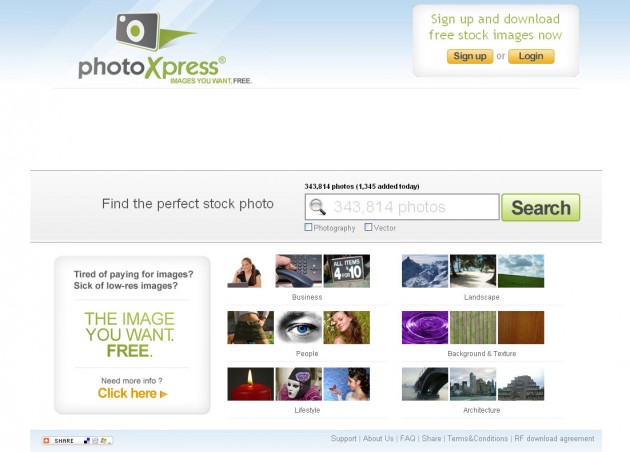
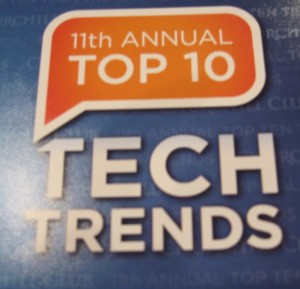 Tonight we attended the
Tonight we attended the 

 Being in Beta is cool. So cool that five years after its April 2004 launch Gmail is still held in Beta by Google. That’s despite the fact that it has 146 million users worldwide (Comscore, April 2009). Which is sort of ridiculous.
Being in Beta is cool. So cool that five years after its April 2004 launch Gmail is still held in Beta by Google. That’s despite the fact that it has 146 million users worldwide (Comscore, April 2009). Which is sort of ridiculous.  Time Magazine recently called YouTube one of the
Time Magazine recently called YouTube one of the 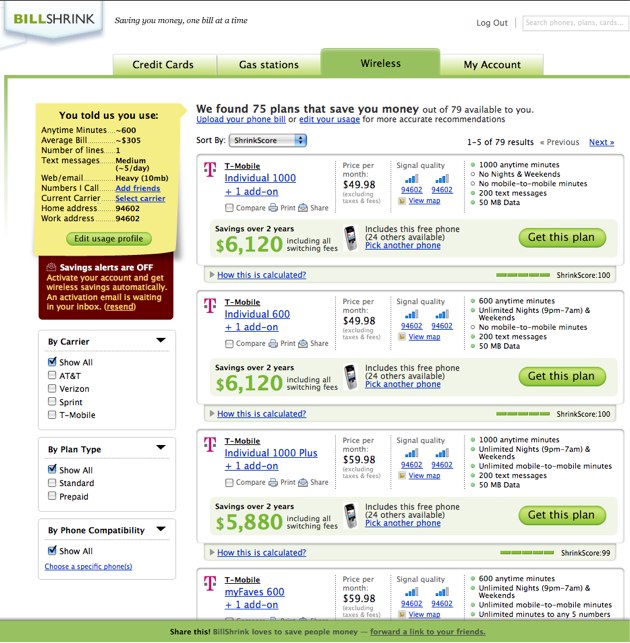
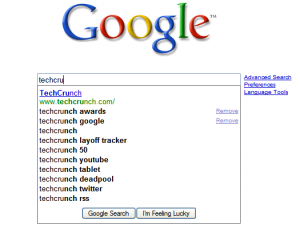 Suggesting queries is becoming a pretty standard practice on search engines these days. You know, those drop-down menus that are populated as you type with things you likely mean. They’re useful, but Google just made them more useful.
Suggesting queries is becoming a pretty standard practice on search engines these days. You know, those drop-down menus that are populated as you type with things you likely mean. They’re useful, but Google just made them more useful.
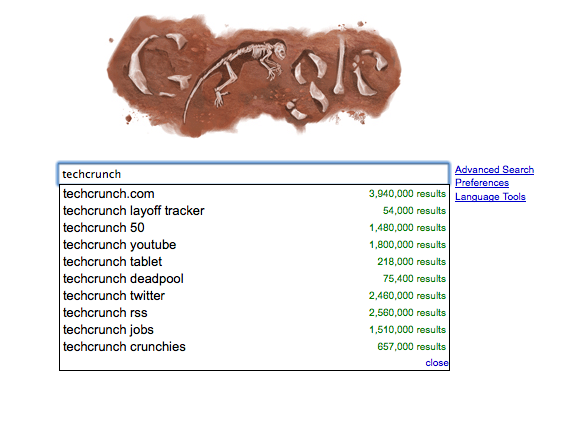


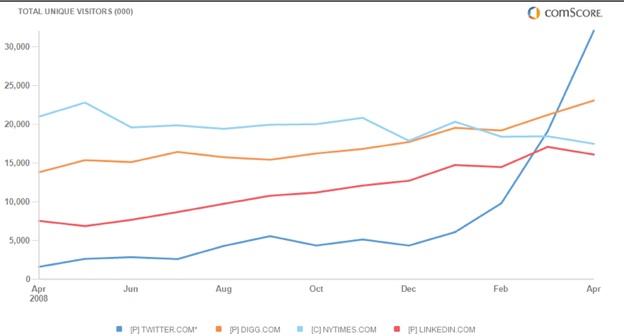
 The reason? McMaster doesn’t care about Craigslist. But he does care about becoming
The reason? McMaster doesn’t care about Craigslist. But he does care about becoming 



 YouTube, a site that was once notorious for pirated content and user-generated videos that were practically useless to brands, has made great strides in the last few years as it looks to appeal to its growing number of advertisers and content partners. Today the site is adding a new feature that makes the platform even more useful, adding Google’s powerful (and very popular)
YouTube, a site that was once notorious for pirated content and user-generated videos that were practically useless to brands, has made great strides in the last few years as it looks to appeal to its growing number of advertisers and content partners. Today the site is adding a new feature that makes the platform even more useful, adding Google’s powerful (and very popular) 
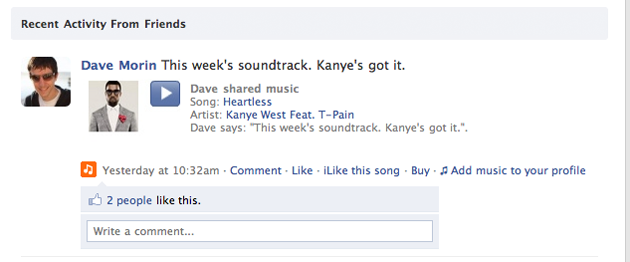
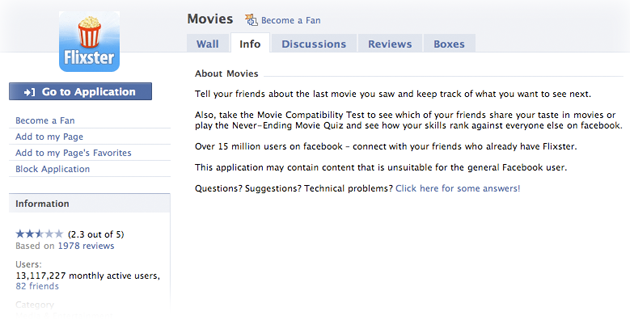
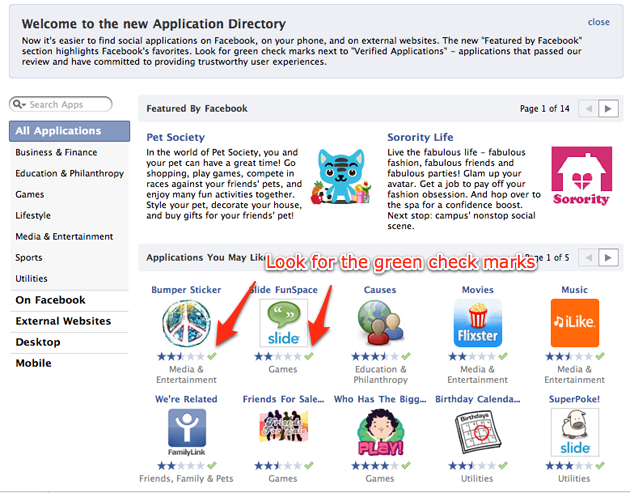

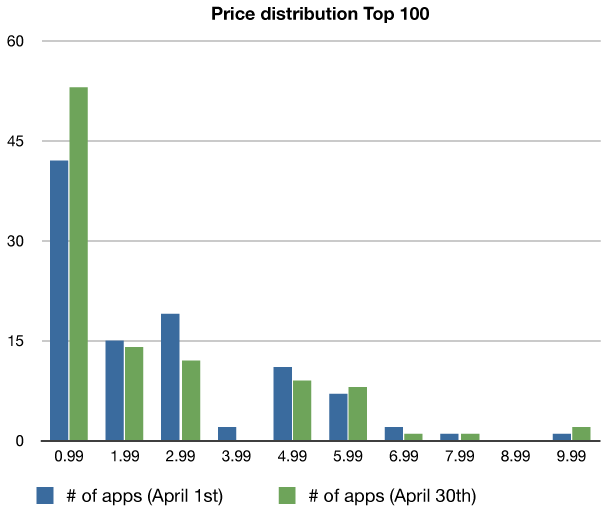





No comments:
Post a Comment